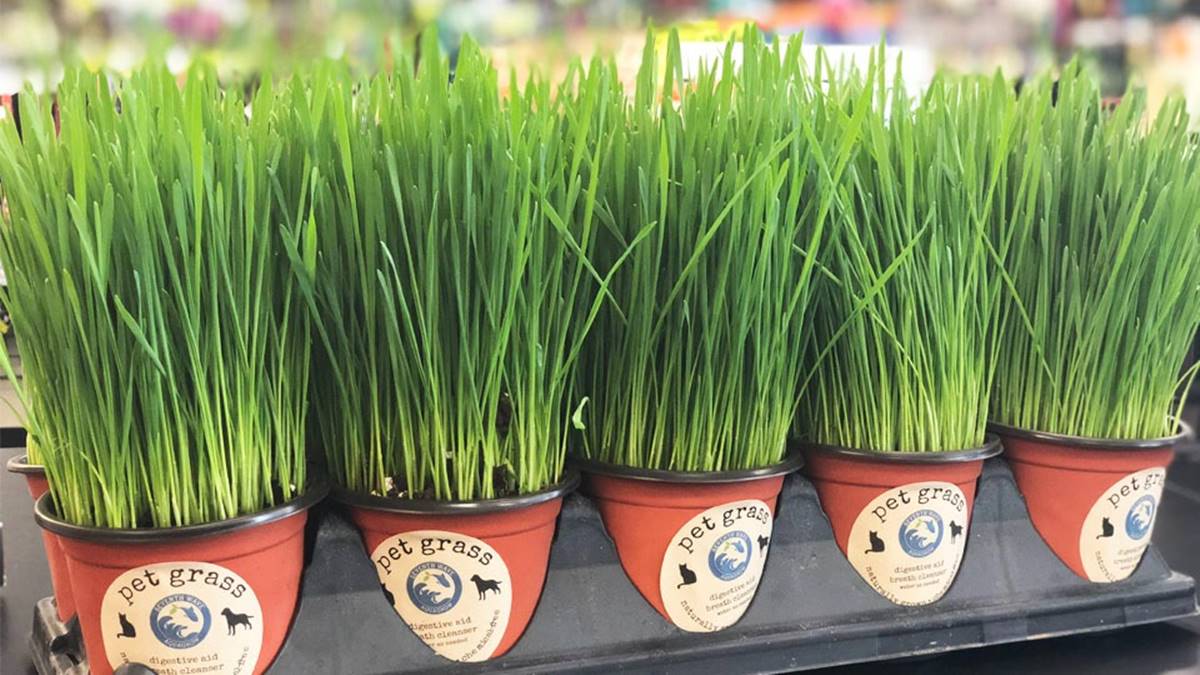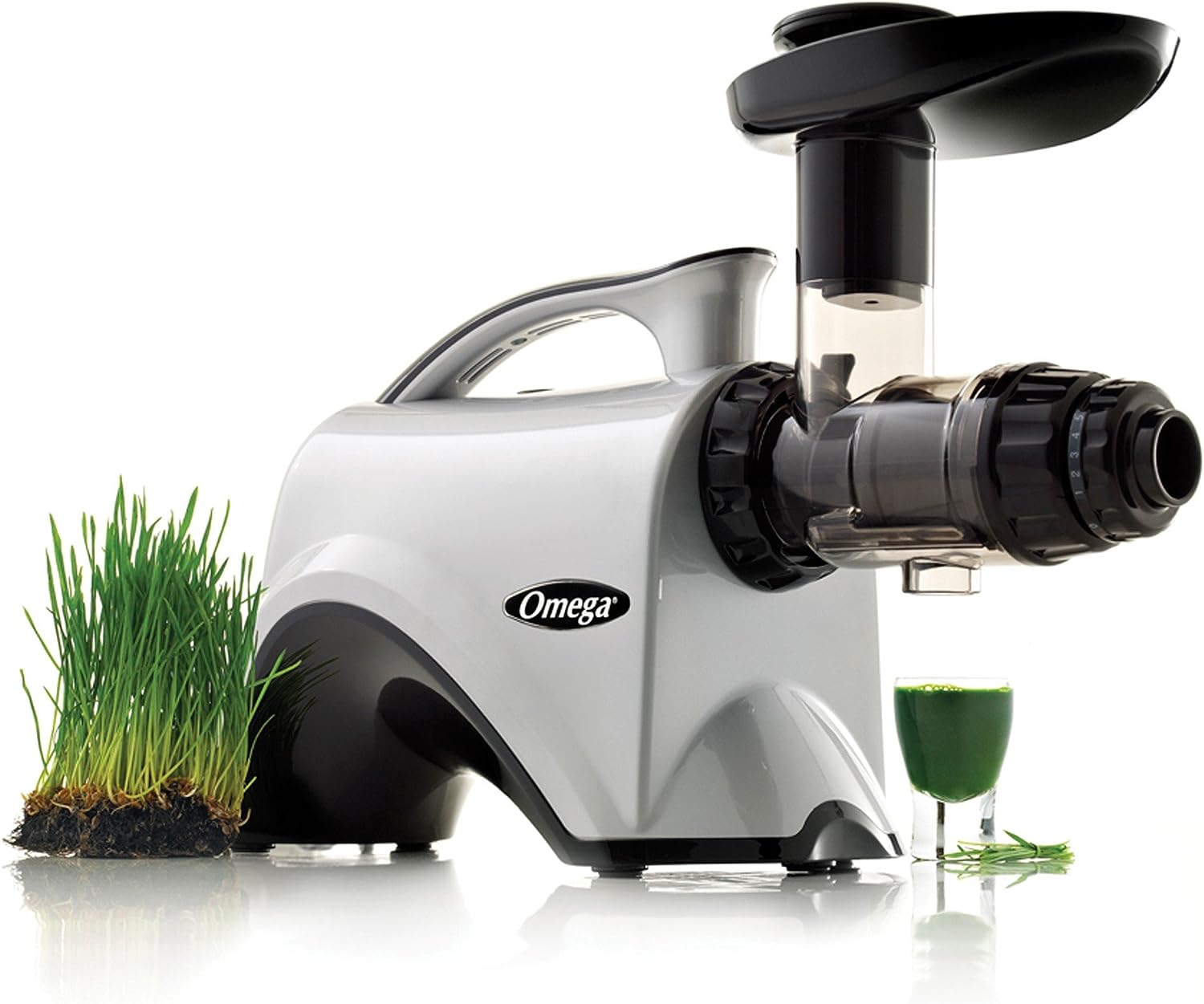

Articles
How To Store Wheatgrass
Modified: August 24, 2024
Learn the best techniques for storing wheatgrass in this comprehensive guide. Find articles with tips and tricks to ensure your wheatgrass stays fresh and nutritious.
(Many of the links in this article redirect to a specific reviewed product. Your purchase of these products through affiliate links helps to generate commission for Storables.com, at no extra cost. Learn more)
Introduction
Wheatgrass is a nutrient-rich superfood that has gained popularity for its numerous health benefits. Packed with vitamins, minerals, antioxidants, and enzymes, wheatgrass is known to boost the immune system, detoxify the body, improve digestion, and promote overall well-being. Whether you grow your own wheatgrass or purchase it from a store, it is essential to know how to store it properly to maintain its freshness and potency.
In this article, we will explore the different methods of storing wheatgrass to ensure its longevity and nutritional value. We will discuss the benefits of wheatgrass, how to choose fresh wheatgrass, and various techniques for storing it in the fridge, freezer, or as a juice or powder. Additionally, we will provide some helpful tips for proper wheatgrass storage.
By following the guidelines outlined in this article, you can preserve the quality of wheatgrass and enjoy its health benefits for an extended period.
Key Takeaways:
- Store wheatgrass in the fridge by wrapping it in a damp paper towel, placing it in an airtight container, and checking the moisture regularly to maintain its freshness for up to a week.
- Freeze wheatgrass by blanching, dividing into portions, and storing in freezer-safe containers. Thaw in the fridge and consume within six months for long-term preservation.
Read more: What Is Wheatgrass For
Benefits of Wheatgrass
Wheatgrass is often referred to as a “superfood” due to its impressive array of health benefits. Here are some of the key advantages of incorporating wheatgrass into your diet:
- Nutrient-rich: Wheatgrass is packed with essential vitamins and minerals, including vitamins A, C, E, and K, as well as iron, calcium, magnesium, and amino acids.
- Powerful detoxifier: The chlorophyll content in wheatgrass helps to eliminate toxins from the body and supports liver health.
- Boosts immune system: Wheatgrass contains antioxidants that strengthen the immune system and protect against infections.
- Improves digestion: The enzymes in wheatgrass aid in digestion, reducing bloating and promoting healthy gut function.
- Increases energy levels: Wheatgrass provides a natural energy boost and can help combat fatigue and tiredness.
- Supports weight loss: Wheatgrass is low in calories and high in fiber, making it a great addition to a weight loss or maintenance diet.
- Improves skin health: Regular consumption of wheatgrass can help clear skin conditions like acne and eczema, giving you a healthy and radiant complexion.
- Alkalizes the body: Wheatgrass has an alkalizing effect on the body, helping to balance pH levels and reduce acidity.
These are just a few of the many benefits that wheatgrass offers. By including wheatgrass in your daily routine, you can experience improved overall health and a strengthened immune system.
Choosing Fresh Wheatgrass
When it comes to storing wheatgrass, starting with fresh and high-quality wheatgrass is crucial for maintaining its nutrient content. Here are some tips for choosing fresh wheatgrass:
- Look for vibrant green color: Fresh wheatgrass should have a vibrant, deep green color. Avoid wheatgrass that appears dull or yellowish, as it may indicate that the grass is past its prime.
- Check the smell: Give the wheatgrass a sniff to ensure it has a fresh and grassy aroma. Any unpleasant or foul odors may indicate spoilage.
- Inspect the leaves: The leaves of fresh wheatgrass should be firm and crisp. Avoid wheatgrass that has wilted or yellowed leaves.
- Choose organic wheatgrass: Opt for organic wheatgrass whenever possible to minimize exposure to pesticides and other harmful chemicals.
- Consider the source: If you are purchasing wheatgrass from a store or market, inquire about the source of the wheatgrass. Look for reputable sellers who prioritize quality and freshness.
- Grow your own: To ensure the freshest wheatgrass, consider growing it at home. This way, you have full control over the cultivation process and can harvest it when it is at its peak.
By following these guidelines, you can select fresh and high-quality wheatgrass, which will lead to better storage outcomes and maximum nutritional value.
Preparing Wheatgrass for Storage
Before storing wheatgrass, it is essential to properly prepare it to prolong its freshness. Here are the steps to follow:
- Trim the roots: Start by trimming the roots of the wheatgrass. Use a sharp knife or scissors to remove any excess roots, leaving only about half an inch intact.
- Rinse thoroughly: Rinse the wheatgrass under cold running water to remove any dirt or debris. Gently swish the grass around in a bowl of water to ensure a thorough cleaning.
- Pat dry: After rinsing, gently pat the wheatgrass dry with a paper towel or clean kitchen towel. Be careful not to crush or damage the delicate leaves.
- Divide into small portions: Divide the wheatgrass into small bunches or portions that you can easily use in one serving. This will prevent unnecessary manipulation of the grass when retrieving it from storage.
By following these preparation steps, you can ensure that your wheatgrass is clean and ready for storage, minimizing the risk of spoilage or contamination.
Storing Wheatgrass in the Fridge
One of the common methods for storing wheatgrass is in the refrigerator. Here’s how you can do it:
- Wrap in a damp paper towel: Take your small portions of wheatgrass and wrap them in a damp paper towel. The moisture will help maintain the grass’s freshness and prevent it from drying out.
- Place in a zip-top bag or airtight container: Once wrapped in the damp paper towel, place the wheatgrass portions in a zip-top bag or an airtight container. Make sure to squeeze out any excess air before sealing the bag or container.
- Label and date: It’s essential to label the bag or container with the date of storage. This way, you can keep track of how long the wheatgrass has been stored and ensure its freshness.
- Store in the fridge: Put the bag or container of wheatgrass in the refrigerator, ideally in the vegetable drawer or a spot with a consistent temperature. The recommended temperature for storing wheatgrass is between 35-40 degrees Fahrenheit (2-4 degrees Celsius).
- Check and replace the damp paper towel: Every few days, check the dampness of the paper towel and replace it if it becomes too dry. Keeping the wheatgrass adequately hydrated is key to preserving its freshness.
By following these steps, you can store wheatgrass in the fridge for up to a week while maintaining its nutritional value and vibrant green color.
Read more: How To Juice Wheatgrass With A Juicer
Storing Wheatgrass in the Freezer
If you want to store wheatgrass for a longer period, freezing is an excellent option. Here’s how you can do it:
- Blanch the wheatgrass: Start by blanching the wheatgrass to preserve its quality. Blanching involves briefly immersing the wheatgrass in boiling water, followed by an immediate transfer to ice-cold water.
- Pat dry: After blanching, gently pat the wheatgrass dry with a paper towel or clean kitchen towel. Removing excess moisture is essential to prevent ice crystals from forming.
- Divide into portions: Divide the wheatgrass into small portions that you can easily use in one serving. This will make it convenient to retrieve just the amount you need without thawing the entire batch.
- Place in freezer-safe bags or containers: Put the portions of wheatgrass in freezer-safe bags or airtight containers. Make sure to leave some headspace to allow for expansion as the wheatgrass freezes.
- Label and date: Label each bag or container with the date of freezing. This will help you keep track of how long the wheatgrass has been stored and when to consume it by.
- Freeze: Place the bags or containers of wheatgrass in the freezer, ideally in the coldest part. The temperature should be maintained at 0 degrees Fahrenheit (-18 degrees Celsius) or below.
When you’re ready to use the frozen wheatgrass, remove the desired portion from the freezer and thaw it in the refrigerator overnight or use it directly in your recipes. Frozen wheatgrass can last for several months, but it’s best to consume it within six months to retain its nutritional value.
Note: Freezing may slightly alter the texture of the wheatgrass, but the nutrients will remain intact.
Store wheatgrass in a sealed container in the refrigerator. Make sure to line the container with a paper towel to absorb excess moisture and change it every few days to keep the wheatgrass fresh.
Storing Wheatgrass as Juice or Powder
If you prefer to store wheatgrass in the form of juice or powder, here are two methods you can use:
Storing Wheatgrass Juice:
- Prepare the wheatgrass juice: Extract the juice from the wheatgrass using a juicer or blender. Ensure that the juice is properly strained to remove any pulp or fiber.
- Transfer to airtight containers: Pour the wheatgrass juice into airtight containers, leaving some headspace to allow for expansion during freezing. Glass containers with tight-fitting lids work well for this purpose.
- Label and date: Label each container with the date of freezing. This will help you keep track of how long the wheatgrass juice has been stored and when to consume it by.
- Freeze: Place the containers of wheatgrass juice in the freezer, ensuring they are kept upright. The temperature should be maintained at 0 degrees Fahrenheit (-18 degrees Celsius) or below.
- Thaw and use: When you’re ready to use the wheatgrass juice, remove a container from the freezer and thaw it in the refrigerator overnight. Once thawed, consume the juice within 24-48 hours for the best flavor and nutritional benefits.
Storing Wheatgrass Powder:
- Dry the wheatgrass: If you prefer to store wheatgrass as a powder, start by drying the grass thoroughly. You can do this by spreading the cut wheatgrass on a dehydrator tray or in an oven set to a low temperature.
- Grind into powder: Once the wheatgrass is fully dried, use a blender or a coffee grinder to grind it into a fine powder. Make sure that the powder is well-blended and free of any moisture.
- Store in airtight containers: Transfer the wheatgrass powder into airtight containers, such as glass jars or resealable bags. It’s essential to keep the powder away from heat, light, and moisture to maintain its quality.
- Label and date: Label each container with the date of storage. This will help you keep track of how long the wheatgrass powder has been stored and when to use it by.
- Keep in a cool, dark place: Store the wheatgrass powder in a cool, dark area, such as a pantry or cupboard. Avoid placing it near the stove or any source of heat.
Storing wheatgrass as juice or powder allows for convenience and long-term preservation of its nutritional benefits. Whether you choose to freeze the juice or store it as a powder, make sure to follow proper storage techniques to maintain its potency and quality.
Read more: How To Make Wheatgrass
Tips for Proper Wheatgrass Storage
To ensure optimal storage and preserve the freshness and nutrient content of wheatgrass, consider the following tips:
- Harvest fresh: If you’re growing your own wheatgrass, harvest it when it reaches its peak freshness and nutritional value. This will ensure the best storage outcomes.
- Handle with care: When handling wheatgrass, be gentle to prevent bruising or damaging the leaves. This will help maintain its vibrant green color and quality.
- Store in small portions: Divide wheatgrass into small portions that you can easily use in one serving. This will minimize the frequency of opening the storage container and exposure to air.
- Minimize air exposure: Air exposure can lead to oxidation, which can degrade the quality of wheatgrass. Choose airtight containers and remove as much air as possible before sealing.
- Use opaque containers: Opt for containers that are opaque or UV-resistant to protect wheatgrass from light exposure. Light can cause nutrient loss and accelerate the deterioration of the grass.
- Label and date: Always label your wheatgrass storage containers with the date of storage. This will help you keep track of how long the wheatgrass has been stored and when to consume it by for optimal freshness.
- Monitor temperature: Ensure that the storage temperature is suitable for the specific storage method. Refrigerated wheatgrass should be kept between 35-40 degrees Fahrenheit (2-4 degrees Celsius), while frozen wheatgrass should be at 0 degrees Fahrenheit (-18 degrees Celsius) or below.
- Regularly check and discard: Regularly inspect stored wheatgrass for signs of spoilage, such as mold, sliminess, or off-putting odors. If any portion appears spoiled, discard it immediately to prevent contamination.
- Consume within recommended timeframe: To enjoy the full nutritional benefits of wheatgrass, consume it within the recommended timeframe. Fresh wheatgrass should typically be consumed within a week, while frozen wheatgrass can last for several months.
By following these tips, you can ensure that your wheatgrass remains fresh, potent, and ready to provide you with its health benefits whenever you need it.
Conclusion
Proper storage is crucial for maintaining the freshness and nutritional value of wheatgrass. Whether you choose to store it in the fridge, freezer, or as juice or powder, following the correct methods will ensure that you can enjoy its health benefits for an extended period.
By choosing fresh wheatgrass, preparing it properly, and storing it in suitable conditions, you can preserve its vibrant green color, vital nutrients, and powerful enzymes. Whether you grow your own wheatgrass or purchase it from a store, these storage methods will help you make the most of this nutrient-rich superfood.
Remember to label your storage containers, monitor temperatures, minimize air exposure, and regularly check for signs of spoilage. By practicing proper wheatgrass storage, you can continue to reap its benefits and enhance your overall well-being.
So, whether you’re adding wheatgrass to your daily juice, smoothie, or using it as a supplement, follow these guidelines to ensure you’re getting the most out of this incredible superfood. Start implementing these storage techniques today and enjoy the freshness and vitality of wheatgrass every time you incorporate it into your routine.
Now that you've mastered storing wheatgrass, why not take your skills further? If nurturing plants sparks interest, learning to grow wheatgrass will surely be rewarding. This guide dives deep into cultivating this superfood right at home, ensuring you always have access to fresh greens. Already growing your own? Perfect! You might also want to check out our tips on wheatgrass juice preparation using a juicer. This article offers practical insights on extracting every bit of goodness from your home-grown wheatgrass, making your healthy lifestyle even easier to maintain.
Frequently Asked Questions about How To Store Wheatgrass
Was this page helpful?
At Storables.com, we guarantee accurate and reliable information. Our content, validated by Expert Board Contributors, is crafted following stringent Editorial Policies. We're committed to providing you with well-researched, expert-backed insights for all your informational needs.














0 thoughts on “How To Store Wheatgrass”